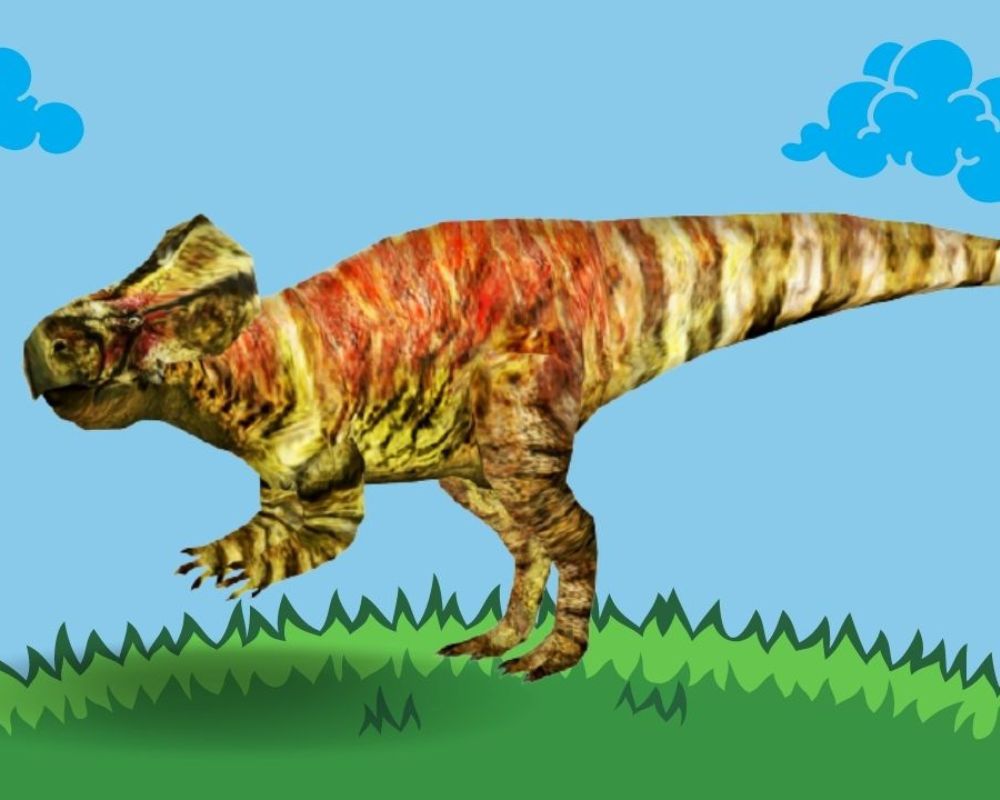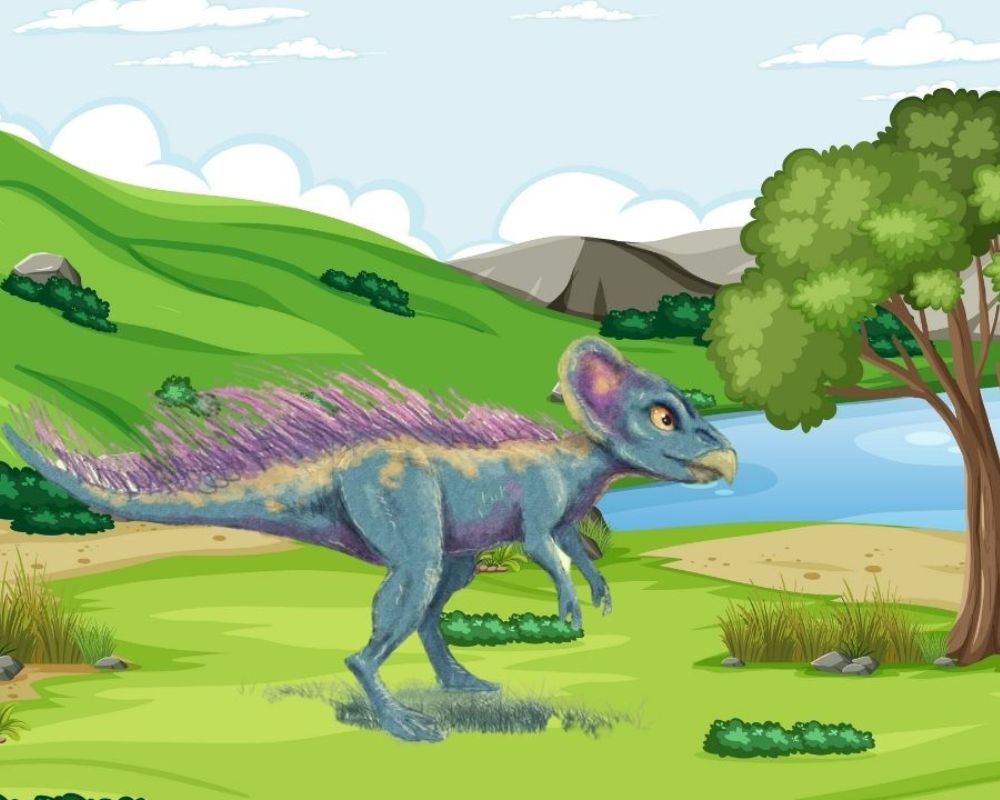Also known as the Microceratops, the Microceratus was a small, herbivorous dinosaur that lived during the late Cretaceous period, about 90 million years ago. It belonged to the Ceratopsian family, which included Styracosaurus and Triceratops. Although not much is known about this dinosaur, it's still a very interesting animal to learn about!
Table of Contents
Some Quick Facts about the Microceratus

| Name | Microceratus (meaning “small-horned face”) |
| Type of dinosaur | Ceratopsia |
| Territory | Asian woodlands, Mongolia and China |
| Size | Small, 2 feet long, 1 foot tall |
| Color | Striped |
| Interesting Characteristics | Bipedal posture, tiny frill on its large head |
| Diet | Herbivore |
| Major Threats | Larger predators, changing climate |
If you love reading about prehistoric creatures, you might have heard of the Microceratus! This small-horned dinosaur is fascinating to paleontologists and dinosaur enthusiasts alike. The Microceratus was a small Ceratopsian dinosaur that existed during the Cretaceous period in Mongolia and China, just like Saichania.
Let’s explore the world of the mini-beaked Microceratus! This small but formidable dinosaur is sure to capture your imagination with its distinctive appearance and fascinating lifestyle.
What do we know About Microceratus Adults?
The Microceratus was a small-sized dinosaur, measuring only 2 feet in length and weighing about 20 pounds. This made it the smallest dinosaur of its time.
The Microceratus was a bipedal dino with short arms. It was one of the earliest Ceratopsian (meaning small-horned) dinosaurs, along with the well-known Psittacosaurus in Mongolia. These tiny creatures inhabited the present-day Gobi desert during the Late Cretaceous period about 90 million years ago.
One of the unique features of the Microceratus was the unique frill on the back of its head. This distinctive frill was probably used for visual display (recognition and mating), communication, or even thermoregulation (maintaining body temperature).
What Dino Family Was the Microceratus In?
The Microceratus was part of the Ceratopsian (“horned face”) dinosaur family. This group also included other herbivorous dinosaurs (such as Styracosaurus and Triceratops) that thrived in Asia and North America during the Late Cretaceous period. All members of the Ceratopsian family went extinct after this historical period.
Since an ichneumon wasp (a yellow-colored parasitic wasp) had already been given the same name (Microceratops), another name had to be found. No two animals may have the same name.
The scientific name of an animal is designed to be unique, to be used all over the world by scientists and other people, regardless of the language they speak. The purpose of this system of naming is to easily identify each creature with its unique characteristics.
Although most of the Microceratus remains have since been allocated to the genus Graciliceratops, a different name Microceratus was coined by Mateus for this type specimen. Therefore, the dinosaur commonly known as Microceratops is now called the Microceratus.
Where Did the Microceratus Live?
The Microceratus lived in Mongolia and China in the late Cretaceous period, approximately 90 million years ago. Fossil remains of this fascinating dinosaur have been found in these Asian regions, providing scientists with valuable insights into its appearance and lifestyle.
Based on historical evidence, the Microceratus used to live in woodlands or grassy areas with trees around them. The tiny size of this creature means that it would mainly feed on vegetation near the ground, which is commonly found in the forests and grasslands they used to prefer.
What Did a Microceratus Eat?

The Microceratus was a herbivorous reptile that fed on cycads, conifers, and ferns. Instead of having teeth, the Microceratus had a beak-like mouth that it used to chew on plant leaves. Like its larger cousins the famous Triceratops and Styracosaurus, the Microceratus had a typical Ceratopsian horn.
Based on fossil records and specimens, the Microceratus would also feed on Agama beans, soybeans, and other lysine-packed plants to battle the lysine contingency (a genetic alteration that prevents dinosaurs from secreting the amino acid lysine).

